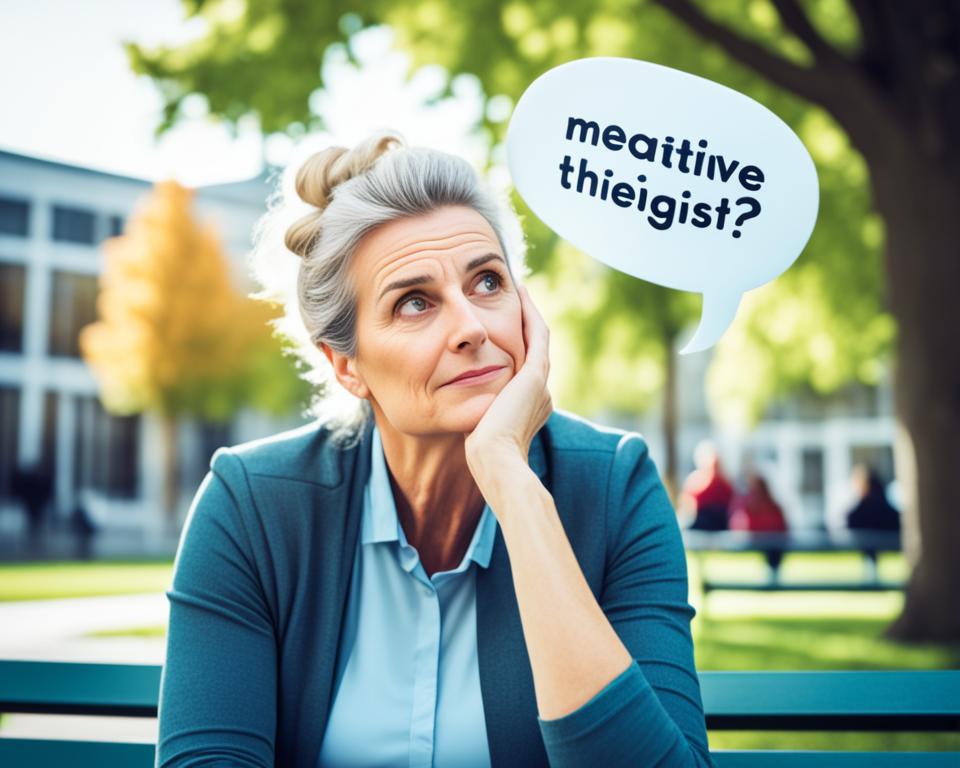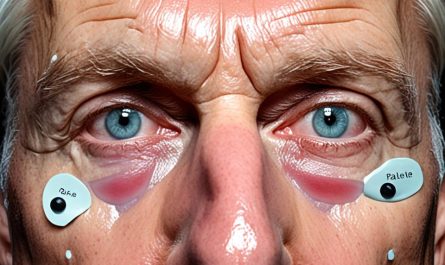In the complex world of mental health, a condition often goes unnoticed or misunderstood – mixed anxiety depressive disorder, or MADD. This condition mixes anxiety and depression, deeply affecting people. It makes it hard for them to find balance and stability in their lives.
MADD is a mental health issue where people feel both anxious and depressed at the same time. It’s quite common but often not diagnosed or treated enough. This disorder can greatly affect how well someone can do in life, from work and relationships to their overall health.
Read interesting things at : grenzgamer
Key Takeaways
- Mixed anxiety depressive disorder (MADD) is a mental health condition characterized by the co-occurrence of anxiety and depression symptoms.
- MADD is relatively common, affecting a significant portion of the population, yet it often remains underdiagnosed and undertreated.
- The impact of MADD can be far-reaching, influencing an individual’s ability to function effectively in various aspects of their life.
- Understanding the symptoms, prevalence, and impact of MADD is crucial for individuals seeking effective treatment and support.
- Seeking professional help, engaging in cognitive behavioral therapy, and adopting coping strategies can be instrumental in managing MADD.
What is Mixed Anxiety Depressive Disorder?
Mixed anxiety depressive disorder (MADD) is a mental health issue. It combines anxiety symptoms and depression symptoms at the same time. People with MADD feel a mix of emotions and physical signs that hurt their well-being.
Definition and Symptoms
MADD means feeling both anxious and depressed at once. Anxiety symptoms include feeling restless, irritable, and having trouble focusing. Depression symptoms are feeling down, losing interest in things, feeling tired, and changes in sleep and eating.
Prevalence and Impact
About 3-5% of people have MADD. It can really change how someone lives their life, affecting personal, work, and social areas. People with MADD might feel their life isn’t as good, face health problems, and struggle with relationships.
“The coexistence of anxiety and depression can create a complex and debilitating condition that requires specialized treatment and support.”
It’s important to understand MADD to help those with it. Knowing the mix of symptoms and its effects helps doctors create the right treatment plans.
Mixed Anxiety Depressive Disorder: A Closer Look
People with mixed anxiety depressive disorder (MADD) deal with a mix of symptoms that can be tough and overwhelming. This condition combines anxiety and depression, making it hard to manage both feelings. It creates a cycle that can make things worse.
Anxiety and depression are closely linked in MADD. Anxiety brings on worries, fear, and physical signs like a fast heartbeat. These can lead to feeling sad, hopeless, and losing interest in things. On the other hand, depression’s negative thoughts and feelings can make anxiety worse, starting a cycle that’s hard to stop.
People with MADD often face more mental health issues, like substance abuse or post-traumatic stress disorder. This makes their condition even harder to handle and shows the need for a full treatment plan.
| Symptoms of MADD | Impact on Daily Life | |
|---|---|---|
| Sleep disturbances |
|
It’s important to understand mixed anxiety depressive disorder to help those affected. By looking closely at how anxiety and depression work together, we can find better ways to treat it. This helps people manage their symptoms and live better lives.
Anxiety Symptoms in MADD
Mixed Anxiety Depressive Disorder (MADD) combines anxiety and depression symptoms. While we know a lot about depression in MADD, it’s important to look at anxiety too.
Physical and Psychological Manifestations
Anxiety in MADD shows up in many ways, both physical and mental. People might feel their heart racing, muscles tight, sweat more, or have trouble breathing. They might also feel scared, worried, or nervous, which can make everyday tasks hard.
- Rapid heartbeat
- Muscle tightness
- Perspiration
- Shortness of breath
- Persistent feelings of worry or dread
- Difficulty concentrating or making decisions
These anxiety symptoms can make things worse. The physical signs can make the mental stress even bigger, making MADD harder to deal with.
It’s key to understand how anxiety affects people with MADD. By tackling both the physical and mental sides of anxiety, people can better manage their symptoms. This can improve their life quality a lot.
Depression Symptoms in MADD
People with mixed anxiety depressive disorder (MADD) face many tough depression symptoms. These can affect how they feel, think, and act every day. It can really change their life and how they feel about themselves.
A key symptom of MADD is feeling sad or hopeless that doesn’t go away. People might feel unmotivated, have little energy, and stop enjoying things they used to love. They might also feel not good enough, guilty, and not value themselves.
Thinking can change too. It’s hard to concentrate, remember things, and have negative thoughts. Making decisions or focusing on tasks can be tough. This makes the depression symptoms even worse.
Behavior changes are common too. Sleep and eating habits can get messed up. Some might not sleep well or sleep too much. Others might eat less or more, which can lead to weight changes.
These depression symptoms and anxiety make MADD a tough mental health issue. It’s important to understand MADD’s complex nature. This helps in finding the right treatment and supporting those with the disorder.
Comorbid Conditions and MADD
People with mixed anxiety depressive disorder (MADD) often have other mental health issues too. It’s important to know how MADD and these conditions work together. This helps in treating and managing them better.
Common Co-Occurring Disorders
Many with MADD also struggle with substance abuse, like alcohol or drug addiction. Using substances to cope can make anxiety and depression worse. Borderline personality disorder can also happen with MADD, as they both deal with managing emotions.
| Comorbid Condition | Prevalence | Impact on MADD |
|---|---|---|
| Substance Abuse Disorders | 30-60% | Worsen symptoms, complicate treatment |
| Personality Disorders | 20-50% | Increase symptom severity, challenge therapy |
| Chronic Physical Illnesses | 40-60% | Exacerbate mental health symptoms, impair daily functioning |
Chronic physical illnesses, like chronic pain or heart disease, can also happen with MADD. This mix of physical and mental health issues makes treatment harder for those affected.
It’s key to deal with these other health issues to help people with mixed anxiety depressive disorder. By understanding how MADD and other mental health conditions interact, doctors can make better treatment plans. This way, they can meet the specific needs of each patient.
Cognitive Behavioral Therapy for MADD
Cognitive behavioral therapy (CBT) is a great help for those with mixed anxiety depressive disorder (MADD). It’s a type of therapy that helps change negative thoughts and actions. This can lessen anxiety and depression symptoms.
CBT teaches patients to spot and fight negative thoughts. They learn to think more realistically. This can make them feel better and handle MADD’s challenges better.
Therapists use different techniques in CBT, like:
- Cognitive restructuring: This is about changing negative thoughts to more balanced ones.
- Exposure therapy: Patients face their fears in a safe way, learning to cope.
- Behavioral activation: Doing fun activities can make people feel better.
| Benefits of CBT for MADD | Potential Limitations |
|---|---|
|
|
Adding cognitive behavioral therapy to their treatment plan helps people with MADD. It’s a big step towards better managing symptoms and improving life quality.

Medication Management in MADD
For people with mixed anxiety depressive disorder (MADD), managing their medications is key. Doctors work hard to find the right mix of antidepressants and anti-anxiety drugs. This helps each patient’s specific symptoms.
Antidepressants and Anti-Anxiety Medications
Antidepressants like SSRIs and SNRIs help with depression in MADD. Anti-anxiety drugs, including benzodiazepines and certain antidepressants, ease anxiety.
Finding the right mix of medications is a team effort between the patient and their doctor. They try different doses and combinations to find what works best. This approach tackles both anxiety and depression in MADD.
| Medication Type | Example Drugs | Potential Benefits |
|---|---|---|
| Antidepressants | Fluoxetine (Prozac), Sertraline (Zoloft), Venlafaxine (Effexor) | Helps with depression, boosts mood, and improves emotional health. |
| Anti-Anxiety Medications | Clonazepam (Klonopin), Alprazolam (Xanax), Buspirone (BuSpar) | Reduces anxiety, helps relax, and manages anxiety’s physical and mental signs. |
With the help of their healthcare team, people with MADD can find the best way to manage their medications. This leads to better life quality and overall well-being.
Coping Strategies for MADD
People with mixed anxiety depressive disorder (MADD) can use many coping strategies. At the top of these are mindfulness and relaxation techniques. These methods are great for reducing anxiety and making people feel better overall.
Mindfulness and Relaxation Techniques
Mindfulness is about paying attention to the now. It’s very helpful for those with MADD. By noticing their thoughts, feelings, and body, people can control their emotions better. This helps them deal with stress in a good way.
- Meditation: Regular meditation helps people with MADD feel calmer and clearer. It makes anxious and depressive thoughts less intense.
- Deep Breathing: Deep breathing exercises can make you feel relaxed. This helps fight the physical effects of anxiety and depression.
- Progressive Muscle Relaxation: This method involves tensing and relaxing different muscle groups. It helps with both physical and mental relaxation.
By adding these mindfulness and relaxation techniques to their daily life, people with MADD can better handle their symptoms. This improves their life quality.
“Mindfulness is the practice of being fully present and aware in the current moment, without judgment or attachment to the past or future.”
Support Groups and Resources for MADD
Living with mixed anxiety depressive disorder (MADD) can feel tough and lonely. But, there are support groups and resources to help. These groups offer a place to connect with others who understand what you’re going through. They provide a sense of community and share helpful advice and strategies.
Support groups are a key resource for those with MADD. Led by experts or people who have been through it, these groups are safe spaces. Here, you can share your story, get advice, and find understanding. You’ll learn from others’ experiences and get tips on managing your symptoms.
There are also online and local resources for MADD. You can find educational materials, hotlines, crisis services, and mental health professionals. These resources help you understand your condition better. They offer support and practical ways to improve your well-being.
| Resource | Description |
|---|---|
| ADAA (Anxiety and Depression Association of America) | A leading nonprofit that gives info, resources, and support for anxiety, depression, and MADD. |
| NAMI (National Alliance on Mental Illness) | A grassroots group offering education, support groups, and advocacy for mental health, including MADD. |
| Mental Health America | A national nonprofit focused on helping those with mental health issues. They provide info, referrals, and support services. |
By joining support groups and using available resources, people with MADD can better manage their condition. They can improve their life quality and find a supportive community.

Lifestyle Changes for MADD Management
For those with mixed anxiety depressive disorder (MADD), making lifestyle changes can help a lot. Focusing on diet, exercise, and sleep can make a big difference. These changes support your well-being and help with the challenges of MADD.
Diet and MADD
Eating a balanced diet is key to managing mood and reducing anxiety. Eating more whole foods like fruits, veggies, lean meats, and whole grains helps keep blood sugar stable. It also gives your brain what it needs to work right.
It’s also good to cut down on caffeine, alcohol, and sugary foods and drinks. These can make MADD symptoms worse.
Exercise and MADD
Exercise can really help with anxiety and depression. Activities like walking, swimming, yoga, or light weightlifting can boost mood. They release happy hormones and lower stress hormones.
Starting a regular exercise routine is a great step. Even a daily 30-minute walk can help manage MADD.
Sleep Hygiene and MADD
Good sleep habits are important for MADD sufferers. Stick to a regular sleep schedule and relax before bed. Avoid using electronic devices before sleep to get better sleep.
Good sleep helps control mood, lowers anxiety, and reduces MADD symptoms. By making these changes, you can take charge of your condition and improve your life.
| Lifestyle Change | Benefits for MADD |
|---|---|
| Balanced Diet | Stabilizes blood sugar, provides necessary nutrients for brain function |
| Regular Exercise | Releases endorphins, reduces stress hormones, improves mood |
| Proper Sleep Hygiene | Regulates mood, reduces anxiety, improves overall well-being |
Overcoming MADD: A Holistic Approach
Managing mixed anxiety depressive disorder (MADD) needs a full approach that looks at all parts of the condition. Using different therapies, medicines, and lifestyle changes helps people deal with MADD’s challenges.
This approach sees MADD as a complex issue that can’t be fixed alone. By using various treatments, people can work on their physical, emotional, and mental health. This leads to better and lasting improvements in their well-being.
Integrated Treatment Plan
An integrated treatment plan for MADD includes:
- Cognitive Behavioral Therapy (CBT) to change negative thoughts and actions
- Medication like antidepressants and anti-anxiety drugs to ease symptoms and balance brain chemicals
- Mindfulness techniques, like meditation and deep breathing, to control emotions and stress
- Changes in lifestyle, such as regular exercise, healthy eating, and better sleep habits, for overall health
These different treatments help people with MADD tackle their condition from all angles. This way, they can work towards recovery and a better life.
| Treatment Approach | Key Benefits |
|---|---|
| Cognitive Behavioral Therapy (CBT) | Helps people change negative thoughts and behaviors, leading to a better mood and coping skills. |
| Medication Management | Medicines like antidepressants and anti-anxiety drugs help reduce MADD symptoms and balance brain chemicals. |
| Mindfulness and Relaxation Techniques | These improve managing emotions, stress, and overall well-being, helping with MADD symptoms. |
| Lifestyle Modifications | Regular exercise, healthy eating, and better sleep habits can improve both physical and mental health, helping with MADD. |
By taking a holistic view on MADD, people can start a treatment journey that helps them beat this complex disorder. This approach lets them find balance and well-being in their lives.
Conclusion
This article has looked deeply into mixed anxiety depressive disorder (MADD). It’s a condition that affects many people. MADD combines anxiety and depression symptoms, making it hard to handle. But, with the right knowledge and steps, people can manage their condition and feel better.
We’ve covered what MADD is, how common it is, and its symptoms. Knowing how anxiety and depression work together in MADD helps people understand it better. It shows why getting professional help is key.
This article highlights the importance of a full approach to dealing with MADD. This means using cognitive-behavioral therapy, managing medications, and making lifestyle changes. By tackling MADD from different sides, people can improve their lives and feel more stable emotionally.



